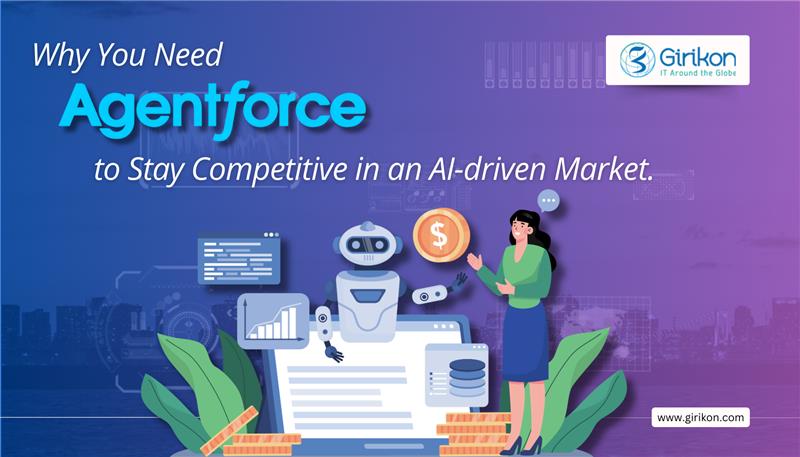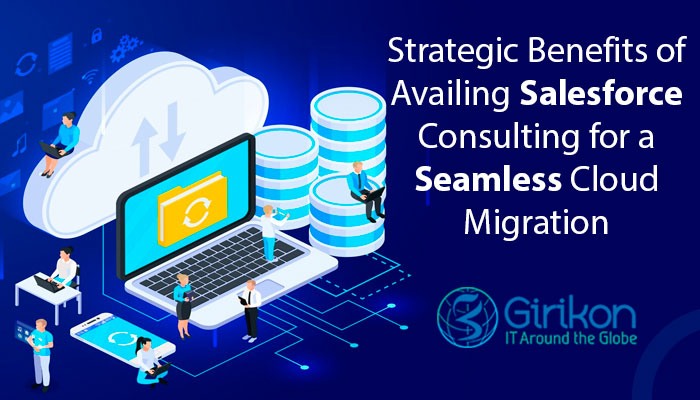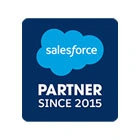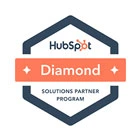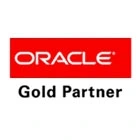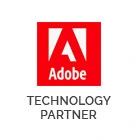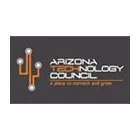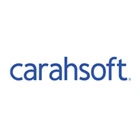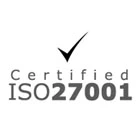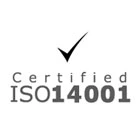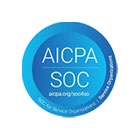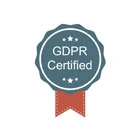The advancement in technology has paved way for robust communication tools, which in turn has bridged the gap between an organization and its end users. One such communication tool that has become an essential aspect of multi-channel marketing is the smart SMS app. While SMS owes its popularity for being the most preferred communication channel due to its great penetration power, the robust Smart SMS app that is built on the Salesforce platform takes marketing to a new-level.
This robust App enables organizations to run Single and bulk SMS/ MMS campaigns. The app empowers sales teams to reach out to more customers quickly due to the presence of features like customizable SMS templates, automation through workflows, Pardot Integration, and more. Besides quicker customer reach, the smart SMS app can help companies spearhead their business promotion journey by effectively engaging with their customers.
Benefits of Smart SMS App for Businesses
The smart SMS app besides empowering organizations to communicate effectively with their customers and prospects via individual/ bulk SMS or MMS also helps them to market their products and services in a quick, easy, and efficient way. It is indeed one of the best SMS apps for Salesforce that can help businesses penetrate a wide customer base through short and informative texts instead of long emailers. The app is available on the Salesforce App Exchange and can be used by small and mid-sized organizations looking to increase their sales and revenue.
Some of the efficient features offered by this robust app include the following:
Home Page Displays Incoming SMS: The smart SMS app helps sales reps to view incoming messages on their Salesforce CRM home page. Sales reps can now take a quick glimpse at the client’s response thereby reducing the chances of missing out on messages shared by clients.
Automatic Response: This feature allows the setting-up of autoresponders that can provide customers with appropriate responses when they are sent promotional SMS or texts related to surveys or contests. This helps in winning the trust and support of the customers.
SMS Scheduler: This feature allows sales reps to schedule different meetings for customers living in different time zones automatically. They can schedule the sending of SMS by setting up the time, date, choosing an appropriate template, and then saving the details. The SMS reaches the intended receiver at the scheduled date and time without the need for physical intervention by the sales reps.
SMS from Report: The smart SMS app offers a feature named ‘Send SMS using Report’ that provides a solution to resolve issues related to unanswered calls and emails. With this feature, sales reps can select the report, and the number they wish to send SMS to.
Opt-out Numbers: The OptOut feature helps users to remove the numbers of contacts who do not want to receive any sort of SMS from them in the future. It also allows users to view the list of contacts that have opted out from getting SMS.
Whats app Integration: This feature allows users to send messages to their contacts or communicate with them on WhatsApp. One needs to fill in the details such as Name, From Number, and Country Code and Save them after enabling the feature. However, a WhatsApp Business account is required to send messages through WhatsApp.
Send Single SMS from the Record Page: Users can send single SMS from the record page including Standard, as well as custom objects. Once SMS configuration for objects is created, users can easily navigate to that particular object and view detail pages of any of its record.
SMS Chat View: Users can chat directly from their individual object’s record page. They should click on Setup, and then on Edit Object to view chat.
SMS History: This feature allows users to view SMS History i.e. list of Outgoing and incoming SMSes. To view more details of each SMS, users will have to click on the subject.
Quick Wrap-up:
SMS continues to be one of the most-effective marketing tools for organizations looking to create their brand identity through superior customer experience and engagement. The Salesforce SMS app with its advanced features takes brand promotion and engagement to the new level. So, stay ahead of the competition by making the most of this extremely efficient marketing tool.
The retail industry is dealing with increasing costs, declining sales, disgruntled customers, and stiff competition. This has encouraged retailers to adopt technology tools and solutions to enhance operational efficiency and improve customer interactions. In fact, the retail industry offers a lot of scope for technological transformation in areas of supply chain management, inventory management, sales, marketing and more thereby empowering retailers to increase the overall efficiency and profitability of their business.
One such technology that has the potential to transform the retail sector is artificial intelligence, which has helped retail businesses boost their speed, efficiency, and precision. Let’s dive in a bit deeper to find out how:
Cognitive Inventory Management: The thinking capability of AI can be leveraged to determine the inventory components basis of the current sales trend. Depending upon the data available, AI draws inferences and forecasts of probable scenarios, provides recommendations, and even takes necessary actions with human approval. Well trained algorithms can be used to make decisions, which improve efficiency. An AI-powered system can process huge amounts of data and help create an inventory that is tailored as per the current market trends and customer demand.
Customer Purchase History: With an AI-powered CRM, organizations can target the specific interest of buyers. By breaking down huge volumes of data, AI tools can be used to identify the purchasing pattern of customers and understand their preferences. The AI-powered systems can further recommend similar kinds of items to the customers for purchase. To integrate an AI-powered CRM, retailers should consider partnering with a Salesforce implementation partner.
Interactive Interactions: Customers always look for a prompt response and with an AI-driven chatbot customer service can be improved significantly. These chatbots are trained to communicate with customers and provide answers to frequently asked questions and provide customers with the necessary support. These bots gather useful customer data and use it to determine their preferences and purchasing pattern.
Streamlining Supply Chain: The retail industry can streamline their supply chain by leveraging AI-powered tools. This might involve categorizing in-demand products, transporting them, tracking the shipment, and inventory management. With an AI-powered CRM in place, the retail industry is poised to attain new levels of efficiency while maintaining a good customer relationship.
Why Should Retail Businesses Consider Leveraging Salesforce Einstein?
Salesforce Einstein is an AI-powered CRM that integrates predictive analytics, and machine learning. Apart from this, there are other features such as Einstein discovery that allow users to figure out hidden data patterns in customer data. Other important features such as Einstein prediction builder provides for business predictions through custom AI models. Bots connected to CRM along with the integration of computer vision make use of deep learning models for identifying the make, model, or brand via product images. Another innovative feature is the Einstein voice assistant that helps in interacting with users in real-time.
Quick Wrap-up:
Given the growing preference for online retailing by customers, organizations working in the retail sector are gradually adopting AI-powered solutions to enhance operational efficiency and business productivity. With a robust AI-powered platform like Salesforce Einstein in place, retailers can provide exclusive customer experience while taking business efficiency to the next level. If you are looking for implementing Salesforce Einstein within your business ecosystem, it’s in your best interest to get in touch with a reliable Salesforce consultant.
The global insurance sector is undergoing a dynamic change due to digital transformation. This digital disruption has forced insurance providers to either make significant changes to their business models or face the risk of being ruined. However, insurers, especially traditional insurers may find themselves at a competitive disadvantage owing to their age-old business models, as well as hefty investments made in infrastructure. In fact any change to their business model might be extremely difficult for some insurers as it may cannibalize their existing business.
To create efficiencies leading to higher profitability or a competitive position, insurers are leveraging innovative technology solutions that too without making significant changes to their business models. Insurance regulators are indeed viewing technology as an enabling solution that can help them better realize their mission of warranting a competitive and sustainable insurance market. Today, insurance providers are doing away with traditional customer servicing methods and are opting for robust insurance CRM software that has helped them manage everything from a single place.
Let’s take a quick look as to how a robust CRM like Salesforce drives positive growth for businesses that are a part of the insurance sector:
Personalized Services: CRM software provides users a great way of increasing the understanding of existing and potential customers. This enables them to provide personalized services according to the unique requirement of every client. Financial service cloud by Salesforce paves way for marketing automation, which enables brokers to nurture leads and then turning them into customers while connecting with customers at the right time, and with the right product advice. Salesforce CRM software for insurance also helps in delivering personalized services to the policyholders. To implement Salesforce insurance CRM software within their business ecosystem, insurance organizations should consider partnering with an experienced Salesforce Implementation Partner.
Improve Customer Loyalty: Offering superior customer service is a key way of improving customer loyalty. Insurance companies that have implemented robust cloud-based CRM get access to meaningful insights that are required for providing personalized sales, claims, and service-related interactions for a huge client base. Moreover, a cloud-powered solution can be integrated with different departments such as sales, marketing, etc., which allows staff and clients to connect irrespective of their location thereby paving way for a more integrated environment.
Secure Repeat Business: A robust CRM can be leveraged to utilize multiple aspects of a business. This presents a cost-effective way of bringing people together, breaking data silos, providing a single view of customers. This allows insurance teams or brokers to sell (up-sell and cross-sell) more while making repeat sales to existing customers by keeping the need of each customer at the center of communication regarding sales, marketing, and support.
Wrap Up:
Salesforce CRM software for insurance provides insurance companies an opportunity to support their customers in a way that extends their journey with the organization rather than providing momentary service and support. With competition within the industry becoming fiercer, Salesforce CRM for the insurance sector can make organizations stand out of the crowd. Organizations looking forward to enhancing business efficiency and ROI by implementing Salesforce insurance CRM should should seek assistance from a reliable and certified Salesforce consultant.
Technology has made its way into every aspect of our lives and the higher education sector isn’t any different. Today higher education institutes irrespective of their sizes and affiliations are striving to provide superior student experience by empowering them to become forerunners of the future. While higher education institutes are utilizing innovative technology solutions to fulfill the long-lasting commitment made to every single student, yet most of these solutions leveraged by the institutes manage to partially fulfill the commitments made.
This is because the solutions utilized by these establishments are greatly siloed and thus fail to create a single perspective of the entire student journey right from admissions to student accomplishment and progression. Apart from this, increased student expectation for a more personalized and connected experience has put immense pressure on higher education institutes to provide students with a positive experience. This is where the Salesforce education cloud comes to picture.
As a cloud-based solution, the Salesforce education cloud empowers institutions to deal with most pressing challenges across their campus while drive student success across the entire life cycle i.e. from prospect to alumni. With a wide array of features, the education cloud by Salesforce has become the number one CRM for providers of higher education. Here’s what makes this platform a go-to choice CRM for higher education institutes:
Hassle-free Admission Process: This cloud solution helps institutions connect with prospective students who are seriously looking for a well-suited university and course. Institutions build brand awareness and campaigns to attract students besides leveraging the data of various applicants by maintaining a database at a single location. This not just provides a holistic view of the prospective students but also acts as a platform to provide personalized services to the students.
Convenient Student Experience: The CRM enables institutions to address specific challenges faced by students’ w.r.t to educational decisions while providing seamless service to enhance standard success. Apart from this, institutions have the option to communicate with the students via their preferred mode of communication. Finally, institutions can provide their students with access to lucrative career opportunities through the regular job posting, handling career fairs while staying connected with the alumni network.
Data Architecture: The education data architecture (EDA), which lays at the very foundation of the Salesforce education cloud enables the usage of standard objects that can be used to manage student relationships, co-curricular and more. The EDA can be customized as per the specific requirement of the institution, which further is made simpler by eliminating the need for coding. In fact, modules, custom fields, and objects, etc. can be created using a drag and drop functionality. Apart from this, EDA also updates itself on a weekly and biweekly basis and can be tailored as per the specific needs of the users through the App Exchange. It is also supported by a diverse community known as the Trailblazer community, where users collaborate and share their ideas.
Advisory Services: One of the significant benefits of using the Salesforce Education cloud is the provision of SAL (Salesforce Advisor Link) solution, which allows students to seek advice on career-related queries. Students can set up appointments with the advisors via mobile application as these appointments integrate easily with the advisors’ calendar. The CRM also integrates office management software that manages appointments and walk-ins.
Quick Wrap-up:
As an innovative platform, the Salesforce Education Cloud is equally beneficial to the institutions, students, and alumni alike. Together with a robust and useful education data architecture (EDA) and advisory link, this powerful platform stands tall among all other available education CRM system. If you are keen on implementing this cloud solution, it’s in your best interest to engage the services of a reliable Salesforce implementation partner .
Every year Salesforce makes three new releases at regular intervals i.e. the summer, winter, and spring. This year, Salesforce summer release which was scheduled to be released in the month of May 2020 got delayed due to the on-going COVID-19 pandemic and has now been released in June. In this article, we will take a look at some of the standard new features offered by the new release. To know more about the releases, it’s prudent to partner with a reliable Salesforce consultant.
Trigger a Flow for Performing Actions: Every time a record is created or updated, the trigger of a Flow that can perform actions for e.g. sending an email after the changes are made to the database. The record-changed flows can be used to make before-save updates and after-save actions. You can replace processes and also make changes in the processes that were created in the process builder
Run Flows that Evade User Permission: This feature allows guest users to produce or edit records that they don’t have access to by fixing your flow to run without sharing. Within such a setting, the flows running ignore the field and object-level security, default settings, rule sharing, teams, manual sharing, and territories.
Properly Manage Community Pages: With an improved community page Menu, navigating to and editing your pages becomes easier. To see the folder where a page resides, it’s important to search for that page and select it from the search results.
Work Item Status for Determining Agent Capacity: This feature helps in determining agent capacity more accurately basis the status of work accepted rather than earlier methods of using open tabs. The tasks allocated to agents continue to remain assigned and reflected even when they are unavailable until the time the task is reassigned or completed.
Debug faster and more Flows: The need for manually reverting changes made to the database when you debug an auto-launched flow is now no longer required. You can save yourself the trouble by using the rollback mode in Flow Builder. The debug option in Flow Builder can be used as it includes the Lookup screen component allowing you to set record variables easily.
Conclusion:
These are a few of the many Summer 20 release features. If you too are looking to implement any of the summer ’20 Release features, you must consider partnering with a Salesforce implementation partner with extensive knowledge, in-depth experience, and proven results in achieving customer success.
Maintaining effective customer relationships is the cornerstone of every business undertaking. In fact, it has become a key determiner of success for organizations. Today, forward-thinking organizations are leveraging robust technology solutions like Salesforce to provide superior service to their customers. As a cloud-based CRM, Salesforce helps organizations to accelerate their sales, grow customer loyalty, and augment their marketing capabilities. Most interestingly, it provides teams across an organization the ability to access the latest customer details for streamlining business processes and creating quality services and solutions.
But, for this to happen, organizations require developing a Salesforce integration strategy to ensure that it partners or connects with other important systems, applications, and services. Successful third party integration is critical to turn it into a valuable business tool. The process of integration is beneficial both for users, as well as the Salesforce platform. Besides helping the platform to expand its services, integration services help in improving the operational functionality of the platform, which ultimately allows organizations to increase their customer base. It makes sense to engage with a reliable Salesforce consulting partner to know more about Salesforce integration services.
What is the Need for Integration?
Today, several businesses have realized the significance of integrating their Salesforce platform with other systems and are thus trying to develop point-to-point connections with adjacent systems. However, such integrations aren’t sustainable as there are several touchpoints, which, when integrated with Salesforce, can provide value to an organization such as developing partner ecosystems, dealing with legacy systems, and more. All these will help in uncovering new opportunities to add value to your customers etc. Considering the variety of Salesforce integration needs, the integration process might become challenging and can be addressed using common integrating patterns.
Common Salesforce Integration Patterns Enlisted below are some of the most commonly incorporated integration patterns that can be used to facilitate seamless third-party integrations:
Migration Pattern: Data migration involves moving a data set from one system to the other. The migration pattern involved in integration allows developers to create migration services that are automated and allow the developed functionality to be shared across all the teams in an organization. Developers have the option to set configuration parameters to get access to API calls. This will provide seamless migration of Salesforce data in and out of the platform either basis as and when required via API or on command basis. Developers can also develop reusable services for facilitating periodic migrations while saving considerable time for the users. Data migration pattern can be utilized for other Salesforce integration such as data migration from legacy systems to Salesforce, Consolidating CRM systems, creating data back-up for customers, and more. The migration pattern is particularly useful while handling vast volumes of data.
Broadcast Pattern: It is a one-way synchronization process that helps users to move data from the source location to multiple systems in real-time. As compared to the traditional 1:1 relationship, this pattern implies 1: many connections. Unlike the migration pattern, the broadcast pattern is more efficient as it functions on a transactional basis and facilitates faster processing of data, besides keeping it secure and up-to-date across all the platforms it has been shared across. It is recommended to ensure the reliability of this pattern as it lacks human supervision, and the majority of processes are initiated through push-notifications that are pre-scheduled.
Aggregation Pattern: In contrast to the broadcast pattern, the aggregation pattern helps in migrating data from multiple sources to a single destination system. This pattern does away with the hassle of running various integrations regularly besides ensuring more reliability and data security. The template created due to aggregation patterns can be used by users to merge multiple data sets for creating reports in different file formats. Some of the most important uses of the aggregation pattern include:
Creation of orchestration API that pulls data from multiple sources and processes it into a single response.
Creation of a central data repository that could be used for compliance and auditing purposes.
Bi-directional Sync Pattern: This pattern brings together multiple data sets across the different systems, causing them to act as a single system while allowing them to acknowledge the presence of other data sets that are being transmitted. This integration pattern comes in handy when different systems are required to accomplish other functions along with their specific tasks in the same data set. The usage of this integration pattern allows users to have a real-time view of the transmitted across the systems. Some of the use cases of this system include:
Integrating multiple systems to Salesforce that leads to improved operational efficiency.
Streamlined quote to cash while serving as a system of records for data that requires to be synchronized.
Co-relation Pattern: While this pattern is quite similar to the bi-directional sync pattern, it differs in the fact that it singles out data sets that intersect with each other and provides bi-directional synchronization of scoped data provided that data occurs in the system naturally. This will lead to the creation of new records if they are found in all other systems apart from the concerned one. This pattern only synchronizes objects as long as they are present in both systems naturally and doesn’t discern the origin of the data object. This integration pattern is useful in cases when two systems wish to share data only if both the systems have records that represent the same contacts or objects.
The Bottom Line: Clearly, there are numerous benefits of Salesforce integration for managing data within enterprises. However, to get started using these patterns, you must get in touch with an experienced Salesforce implementation partner who can help you make the right choice. So, develop long-term and strong customer relationships by gaining a unified view of your customers through Salesforce integration.
Data loss poses a severe threat to businesses of all sizes. When sensitive data is compromised or stolen, the financial health, productivity, and reputation of a company take a hit. As data volume is increasing exponentially, opportunities for thefts and breach of proprietary information are rising significantly. While businesses are adopting strategies to prevent the loss of their confidential data, it isn’t entirely possible to avoid the same.
While organizations using robust CRM systems like ‘Salesforce’ might develop a false sense of security as they store their data in the cloud, yet these systems aren’t prone to outages. While Salesforce till now provided data back-up recovery services for retrieving lost data, especially in scenarios such as ‘data import’, which might at times go wrong. However, Salesforce is about to cancel its data recovery services by the end of July 2020.
What makes Salesforce retire from their data recovery services?
Salesforce doesn’t consider their data recovery service worthy enough to be continued due to the time and cost involved in retrieving the data. Apart from this, some data cannot be recovered using Salesforce data recovery services, and an excellent example of it is the metadata. In fact, only data as old as three months can be recovered and is recommended as a last resort that, too while recovering large quantities of data. While the Salesforce recovery process requires you to pay a hefty rate of $10,000, it takes several weeks before you receive the CSV file much before you restore data to your org. What’s more bothersome is that Salesforce doesn’t assure of complete retrieval of data. With such poor services, Salesforce finally decided to call off its data recovery services without any replacement.
Alternatives to data recovery services by Salesforce
Salesforce provides three out-of-the-box options that require manual intervention:
Data Loader: Using Dataloader, you will be able to export all your data manually. With a developer by your side, you will be able to automate the export process easily.
Data Export Wizard: This function enables you to program a downloadable copy of your data. Once the back-up is ready, you will be notified regarding the downloading of the files via email. This allows you with 48 hours to download all the data before they expire.
Reports: The reporting function, just like Data Loader, can be used to export your data. However, running extensive reports can be taxing and time-consuming.
What is the Best Fit?
In such a situation, the best approach is to use third-party applications that are available on AppExchange for data recovery and back-up. However, it would help if you looked out for features like multiple snapshots of data, comparison between production and sandboxes, and data hosting solution coupled with a mechanism for querying data. Since, the Salesforce platform is designed to facilitate integration with third-party tools; it provides for a back-up data solution.
Conclusion:
While it isn’t easy to prevent data loss, the good news is that it is easy to avoid the loss of Salesforce data with a robust disaster recovery strategy. Though Salesforce intends to back out from their data recovery services, it certainly provides for a back-up solution.
Girikon – a reputed name in the Salesforce consulting space offers wide array of IT services that can be leveraged by organizations across different sectors to fulfill their specific business needs.

 +1-480-382-1320
+1-480-382-1320 +61-1300-332-888
+61-1300-332-888 +91 9811400594
+91 9811400594